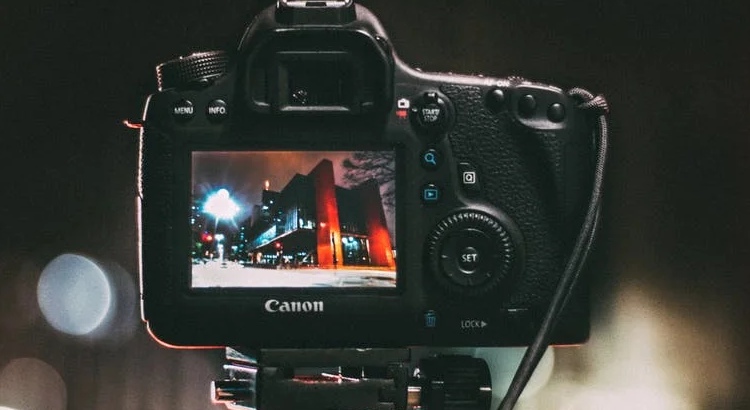Understanding A-Roll and B-Roll in Video Production
A-roll and B-roll are key terms in video production and filmmaking. Knowing the difference between them can help you create more engaging videos, whether you're making films, interviews, documentaries, or online content.
Key Takeaways
- A-roll is the main footage that carries the story, featuring the primary subject or narrator.
- B-roll is supplemental footage that supports the A-roll and adds visual interest.
- Using both types of footage together improves storytelling and keeps the audience engaged.
- Even small productions can use A-roll and B-roll to achieve professional results.
A-Roll vs. B-Roll: The Core Differences
A-roll is the primary footage of your video project. It usually features a person talking, narrating, or driving the story forward. In an interview, for example, A-roll shows the subject speaking.
B-roll is secondary footage that gives more context or shows what the A-roll talks about. Together, they make the video more interesting and smooth out transitions.
- A-roll: Main video and audio content; the backbone of the project.
- B-roll: Cutaway shots, background scenes, or close-ups; used to visualize, complement, or cover unwanted parts of A-roll, such as pauses or mistakes.
Editors layer B-roll over A-roll to keep the visuals fresh. B-roll also helps cover editing cuts, reducing monotony and maintaining viewer interest.
Why Use Both A-Roll and B-Roll?
Using only A-roll can make your video dull or repetitive. B-roll enhances the story by showing what the narrator describes. It also helps fill gaps or cover minor mistakes in the main footage. Visual storytelling keeps viewers engaged, and adding B-roll is an effective way to do this.
- Show, don't just tell: B-roll demonstrates what is discussed in A-roll.
- Smooth transitions: B-roll covers up cuts and joins different sections.
- Edit flexibility: B-roll lets editors remove coughs, awkward pauses, or stutters from A-roll without noticeable jumps.
How A-Roll and B-Roll Are Captured
On large productions, different camera crews often shoot A-roll and B-roll. The "A" camera follows the main action. Meanwhile, the "B" camera captures other angles or scenes for later use. In smaller teams, one camera may shoot the A-roll first, then gather B-roll afterward.
- Large projects: Multiple crews, dedicated cameras for A-roll and B-roll.
- Small projects: One crew films both types, often at different times.
Real-World Applications of A-Roll and B-Roll
Let's look at where A-roll and B-roll usually appear:
Interviews and Talk Shows
- A-roll: The interviewee or host speaking directly to the camera.
- B-roll: Shots of the interviewer listening, people nodding, or related scenes (e.g., the workplace, relevant action).
Editors use B-roll to cover up cuts, keep the visuals moving, and add context to a person's words.
Narrative Films and Documentaries
- A-roll: Narrators or characters telling the story.
- B-roll: Footage of locations, close-ups, activities, or historical imagery that shows what is being described.
B-roll makes the story richer and more visually appealing, turning spoken words into a complete visual narrative.
News and Feature Reports
- A-roll: Reporter delivering the main story.
- B-roll: Clips of events, interviews, or supporting activities happening on location.
According to a 2022 survey, nearly 75% of video editors say B-roll is "very important" for making stories more dynamic (Statista, 2022).
Live Event Production
- A-roll: Wide or main shot capturing the entire stage or performance.
- B-roll: Close-ups, audience reactions, and behind-the-scenes shots.
Such coverage ensures every angle is recorded, letting editors create a more engaging final cut.
Benefits of Combining A-Roll and B-Roll
- Improved Engagement: Viewers stay interested with changing visuals.
- Clearer Storytelling: B-roll gives context and demonstrates key points.
- Professional Look: Mixing shots gives videos a polished, cinematic style.
- Editing Flexibility: B-roll makes it easier to cover up cuts or awkward moments.
Videos using a mix of A-roll and B-roll are 60% more likely to keep viewers watching until the end (Wistia, 2021).
Tips for Using A-Roll and B-Roll Effectively
- Always plan your B-roll before filming; think about the story and what visuals can boost the A-roll.
- Use B-roll to cover up any edits to the main narrative for smooth transitions.
- Make sure all B-roll footage supports and enhances what is being discussed in A-roll.
- Capture more B-roll than you think you'll need. Extra footage often proves useful in editing.
Making Your Videos Even Better: Transcription and More
Clear communication is key in video production. Transcribing your A-roll and B-roll content can make editing smoother, improve workflow, and expand accessibility. For example:
- Transcripts help editors find important sections quickly.
- Creating captions or subtitles makes your videos more accessible to a wider audience.
- Search engines can index your video content better with accurate transcripts, boosting SEO.
Professional transcription services can provide fast, accurate scripts. For even faster results, many people now rely on automated transcription solutions or consider an AI transcription subscription for ongoing needs.
Captioning and Subtitling Your Videos
- Closed captions make your content accessible for the hearing impaired.
- Subtitling services expand your audience globally.
Adding captions or subtitles also boosts viewer engagement and search friendliness.
Accurate Edits and Multilingual Content
- Transcription proofreading services ensure scripts are error-free.
- To reach more viewers, consider text translation or audio translation services for your video content.
How GoTranscript Can Help
GoTranscript offers a full suite of solutions to support your video projects at every stage:
- Affordable and reliable transcription services
- Fast turnaround with automated transcription
- Easy, ongoing access with our AI transcription subscription
- Expert captioning and subtitling services
- Accurate transcription proofreading
- Clear pricing for all budgets: transcription pricing and captioning pricing
To see the difference high-quality transcription, captioning, subtitles, and translation make, order transcription or order captions for your next video project from GoTranscript today.



















 Verified Order
Verified Order